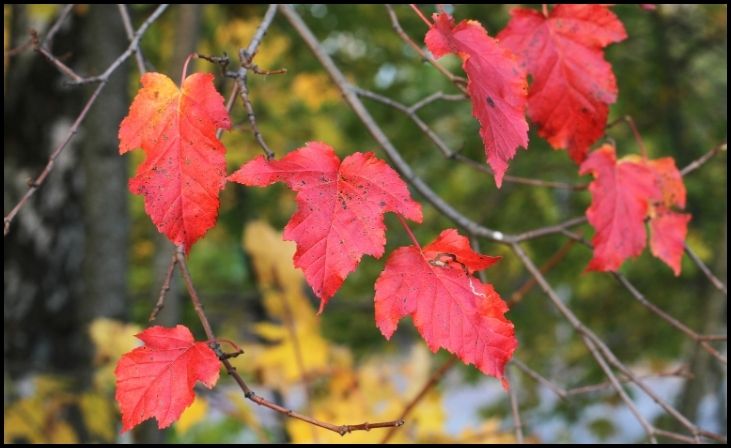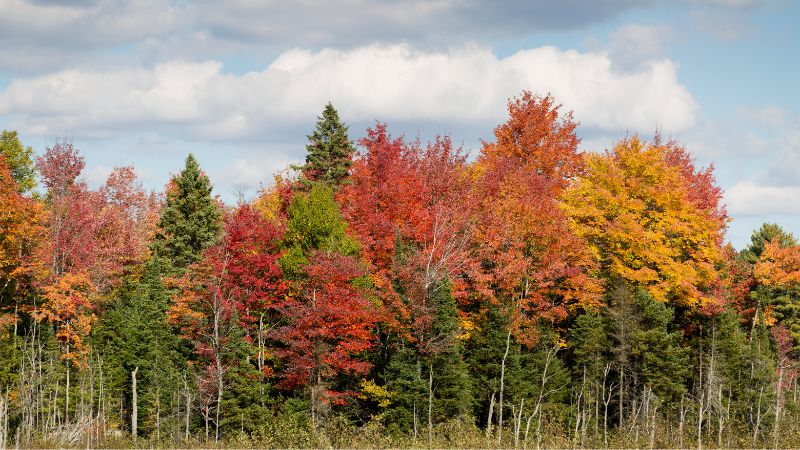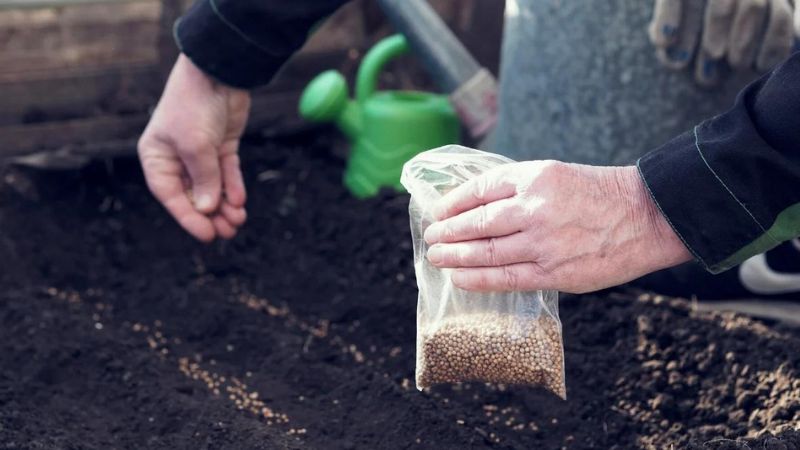Maple trees are renowned for their stunning foliage, vibrant autumn colors, and versatility in various landscapes. With over a hundred species, these trees offer a range of sizes, shapes, and colors that can enhance any garden or park. Here are eight beautiful species of maple trees that stand out for their unique characteristics and appeal.
Amur Maple

Amur maples are small trees belonging to the Acer genus, often growing as multi-stem shrubs or small trees with thick, spherical crowns. They are particularly valued for their vibrant red and orange fall foliage, making them a striking addition to any landscape. These trees are also hardy and adaptable, thriving in various soil types and conditions, making them a popular choice for urban gardens and small yards.
Big Leaf Maple

As its name implies, the Big Leaf Maple is known for having the largest leaves of any maple species, with five-lobed, palm-shaped leaves that can be over 12 inches wide. This majestic tree is native to the Pacific Northwest and is often found along stream banks and in moist forests. Its large leaves provide ample shade in the summer, while its golden-yellow fall foliage adds a touch of brilliance to the autumn landscape.
Hedge Maple

The Hedge Maple is a versatile and resilient tree that thrives in dry, acidic, alkaline, or salty soils, shaded areas, and even ozone-deficient conditions, making it an excellent choice for urban gardens. This small to medium-sized tree has a dense, rounded crown and is often used for hedges and screens. Its leaves turn a lovely yellow in the fall, adding seasonal interest to gardens and parks.
Hornbeam Maple

Unlike many other species in its genus, the Hornbeam Maple stands out with its distinctive leaves that differ from typical maple leaves. This small tree or large shrub has leaves resembling those of the hornbeam tree, with a finely toothed margin. It is a slow-growing tree that offers a unique texture and form, making it a valuable addition to gardens and landscapes seeking diversity and visual interest.
Japanese Maple

Japanese Maples are beloved for their delicate beauty and are commonly used in bonsai and gardens. There are thousands of varieties, each with unique features such as green or red leaves of various shapes and textures. These trees are especially prized for their stunning fall colors, which range from fiery reds to deep purples. Japanese Maples are ideal for small gardens, patios, and as focal points in landscape designs.
Norway Maple

Also known as the European Maple, the Norway Maple is a popular species that was introduced to North America from Europe in the 18th century. This tree is known for its hardiness and adaptability, thriving in a wide range of conditions. It has a dense canopy of dark green leaves that turn golden yellow in the fall. Due to its invasive nature in some areas, it is essential to plant it thoughtfully.
Paperbark Maple

The Paperbark Maple is a favorite landscaping tree because of its distinctive cinnamon or reddish-brown bark that peels away from the trunk, even when the tree is young. This small to medium-sized tree has trifoliate leaves that turn vibrant shades of red and orange in the fall. Its unique bark provides year-round interest, making it a standout feature in any garden or park.
Red Maple

The Red Maple lives up to its name in many seasons, showcasing crimson buds in spring that develop into red samaras on reddish twigs. In the fall, the leaves transform into brilliant reds, making this tree a favorite for autumn color. The Red Maple is highly adaptable, thriving in various soil types and conditions, from wetland areas to upland forests. Its stunning seasonal changes make it a versatile and beautiful addition to any landscape.


